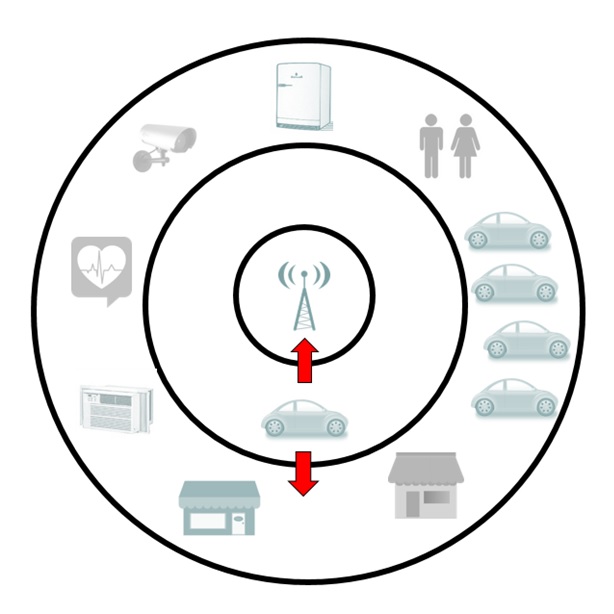
Our CES excursion this year was proof positive that connectivity is the lifeblood of our modern techie culture. Smart devices are abundant. The Internet of Things – connecting our world, our gadgets, our devices – is a fast-moving train that impacts everything from homes to refrigerators to retail stores.
And of course, cars.
Just back from CES, one of the takeaways echoed by many of our broadcast executives revolves around the automakers’ mindset. A benefit of attending this convention is that it provides insights into the thought process of automotive pros – marketers, engineers, and designers. You can watch all the videos and read the stories, but until you speak directly to leaders in the car community, you don’t glean true insight into the their competitive strategies. As many of our C-suiters noted, they are embracing technology in virtually every aspect of their vehicles.
And that’s a mistake that many radio operators make in thinking that auto companies’ priorities are solely focused inward on the dashboard. While car makers are working feverishly to hone and perfect their “center stacks,” a larger goal is outside the car – to the Internet of Things. They’re devoting major resources – revenue and human – to developing technologies that allow their vehicles to connect with everything else, as well as the data that is delivered by these connections.
As the graphic below depicts, cars have the ability to interface with just about everything: homes, retail stores, security systems, other cars, and even people who aren’t in cars. The cars of the very near future will extend these capabilities, providing more data and return on investment to advertisers and marketers.

Where does radio fit into this equation?
For now, it doesn’t. As our radio executives saw firsthand at CES, the automakers don’t think a whole lot about the radio broadcasting industry. They respect radio, and are always quick to assure broadcasters their stations will remain part of their dashboard ecosystems.
But radio’s participation in the automotive Internet of Things is sketchy at best. That’s why our stop at DTS to see the latest and greatest on the HD Radio front was an important one on our tour. The Artist Experience feature that shows advertisers on the touchscreen is a starting point – a way in – to the Internet of Things.
But radio will need to move quickly. A story in MediaPost by Chuck Martin illustrates how automakers are seeking out novel ways to collect more data and dollars from their cars. And the next step is the license plate. You may think these mundane aluminum identifiers on the backs of cars simply provide static numbers and letters. Think again.
This new technology by Reviver is called the rPlate which comes alive when the car is parked, displaying information about nearby stores, as well as other advertising matter connected to nearby stores. The IoT capabilities of these plates include DMV registration, so we’re talking “smart” license plates.
This visual, on-site advertising for stores and special deals is already taking shape. The plan is to launch in Florida, California, and Arizona.
This technology is yet another indication why the radio broadcasting industry needs to forge closer relationships with the automotive community – whether it’s on the OEM level or with neighborhood car dealers.
Automotive technology is moving quickly. Radio needs to get it in gear.
Thanks to Entercom’s digital guru, Tim Murphy, for the heads-up about this technology and for attending the Jacobs CES/CEO Tour.
DTS is a research client of Jacobs Media Strategies.
- What To Do If Your Radio Station Goes Through A Midlife Crisis - April 25, 2025
- A 2020 Lesson?It Could All Be Gone In A Flash - April 24, 2025
- How AI Can Give Radio Personalities More…PERSONALITY - April 23, 2025




Hmmm… the “car sticker” comes back virtual.
Pretty much, yes.
Methinks radio will fare poorly in the IoT world of cars.
At least until the first time someone…government, hacker or terrorist…remotely causes 100,000 cars to crash across the country because the network security on these vehicles (like most IoT) isn’t just falling far short of “robust”…it’s practically nonexistent.
Suddenly people will be terrified to even bring their smartphones into the car with them…much less have ANY connectivity in the car itself.
Make no mistake, the only reason we haven’t seen this happen already isn’t because the FBI is hard at work, or because auto OEM’s are getting better about security. It’s because whoever’s cracked the vehicles is waiting patiently for enough connected cars to get on the road so they can wreak real chaos. Making three or four Teslas crash means nothing but Tesla’s stock dips for a week. Any smart operative knows they need to wait until you can make 1,000 or 10,000 cars crash…all at once…and paralyze the traffic in a given city. Or cities. THAT’S how you destabilize a target population.
https://www.wired.com/2016/08/jeep-hackers-return-high-speed-steering-acceleration-hacks/
At that point? I’d say radio will do quite well! A pyrrhic victory, perhaps, but a victory nonetheless.
Brad, a number of people have talked about security issues with IoT. These days, it’s hard to imagine this won’t be a potential problem. Thanks the comment and the insight.